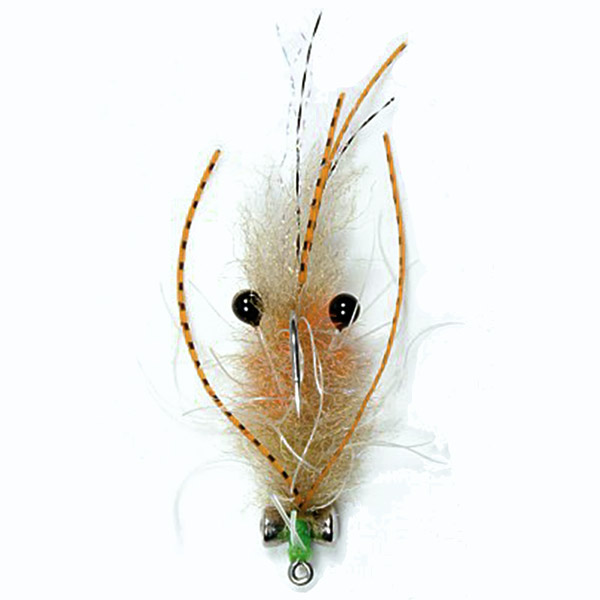Many will argue that it doesn’t matter what you throw at a bonefish in the Bahamas, they’ll usually eat. The study and creation of an effective bonefish fly is not aimed at schoolies in the Bahamas but more the large, selective fish that novice anglers eventually seek. In locations like Turks & Caicos, Hawaii, Southeastern Florida, and the South Pacific there are large fish that are very precise in choosing the fly they will eat. Even if they were not overly selective, why travel and take a chance on a missing a fish because of an inferior or poorly chosen fly. There are many things that constitute a good bonefish fly, we’ll just briefly mention a few of the major ones.

1. Durability
Nothing is worse than a fly that falls apart completely, especially if it is on the first bonefish.
Without totally slamming the flies that are made in remote reaches of the world by people who don’t even fly fish, they stink! They are often tied on cheap hooks with use cheaper, less expensive materials and they fall apart usually after 1 or 2 bonefish. There are existing the US are companies and individuals that manufacture quality flies tied on good hooks, you just have to do your homework. We like to use quality materials with a few extra wraps to make the flies durable and when we can, add some adhesive in between steps. Lately we’ve been using some thin epoxy to add strength to the thread, and also hold in the wing & leg materials. Take the time to tie a quality fly and in the long run, you won’t have to tie as many because quality ties stand up to the test.
 2. Movement
2. Movement
Nothing gets a bonefish or any fish to eat like movement. If the fly is moving with the tidal flow, you are in great shape.
We like to use materials like fox fur, rabbit and various types of sili-legs for our bonefish files because the material has an inherent natural movement in the water. Even if the fly is stationary, the materials and moving with the current and almost breathing, giving life to the fly. While the furs look amazing in the water, the can get heavy and noisy once it is wet. This can and usually does create a problem in skinny water, especially if you make a big “plop” noise when you cast it. Try tying the same pattern in different materials for different situations so you have multiple options in your box.


3. Proportion
If the fly is not proportioned properly the bonefish and all other fish will likely reject it. This has nothing to do with the quality of the imitation but more to do with the movement of the fly and its similarity to the prey species it imitates. Sometimes a poor imitation just happens to match the profile or size of a prey and gets eaten because it happens to look right. This is the goal, but rather than by luck, a more systematic approach is best.
If the head or tail are too long, the fly could foul but that is an easy fix if you have the ability to trim it on the skiff. A long wing could cause the fly to spin while being stripped aggressively. If the weight of the fly is too far forward or too far back, this could make the fly look un-natural to a bonefish causing rejection of the fly.
Take you time to get it right and test your new patterns in the water like all good anglers do. Try some long, try some short and see how they perform.

4. Productivity
Local food in the waters, time of year and weather conditions will all play an important part of fly selection. Depending on your location, this will dictate the productivity of your pattern while fishing for bonefish. Most Bahamian locations use the gotcha fly and some guides will tell you they will eat a bare hook if it moves and they are hungry enough. When selecting a pattern, it is ok to go with you own fly or a friends. Remember, productive patterns that are well known and commonly used are popular because they have been productive for years. This means the creator intentionally or not, tapped into something that mimics something they commonly see and eat. It is ok to use a gotcha and if you want to you can make your own. Just be sure to use a good hook, good materials, and watch your proportions.
We always encourage anglers to tie their own flies as the is a nostalgic and very relevant aspect of one being a complete angler. There are some really great patterns out there and you can find a lot of them on Flyfishbonehead, In the Riffle, and Global Flyfisher. There are also some of the more productive Caribbean bonefish flies in our shop that might inspire you to tie. An upcoming issue in Tail will be discussing the history of fly tying and how it is emerging once again among fly fishing purists.
 SUBSCRIBE TO TAIL FLY FISHING MAGAZINE
SUBSCRIBE TO TAIL FLY FISHING MAGAZINE
Tail Fly Fishing Magazine


